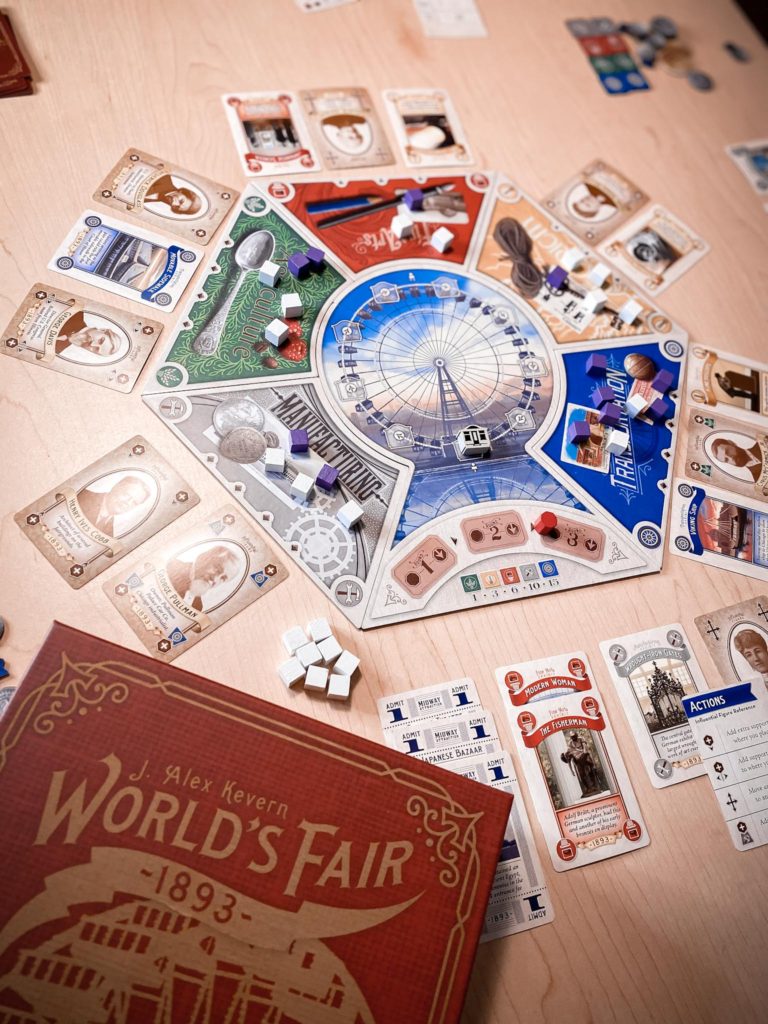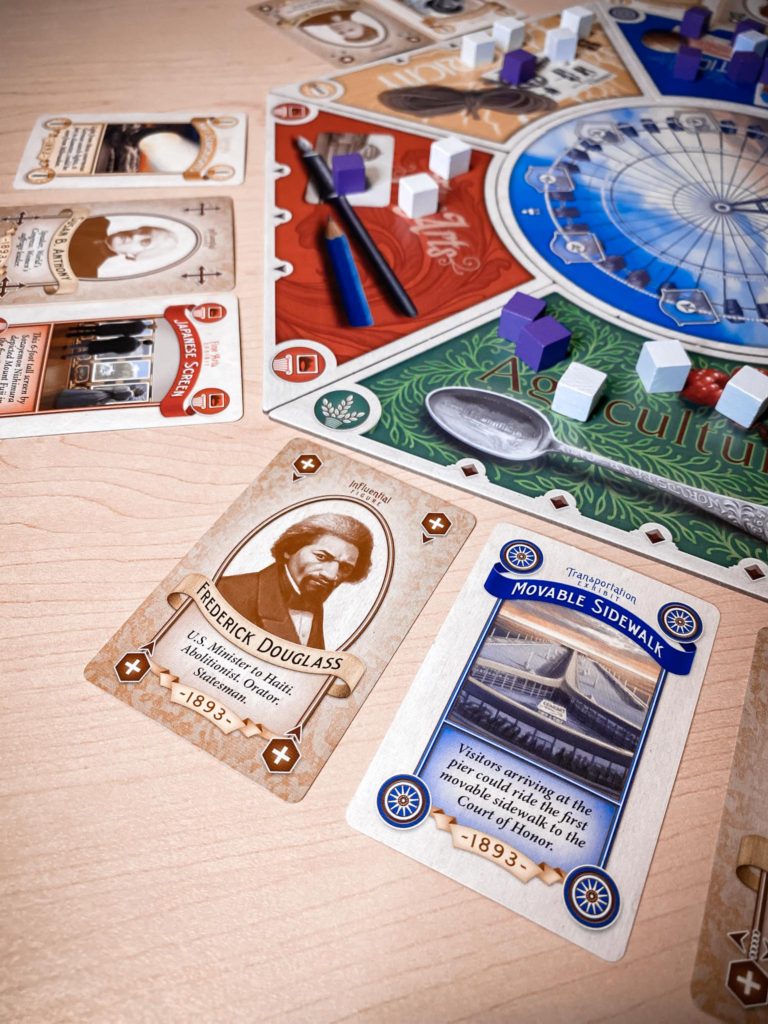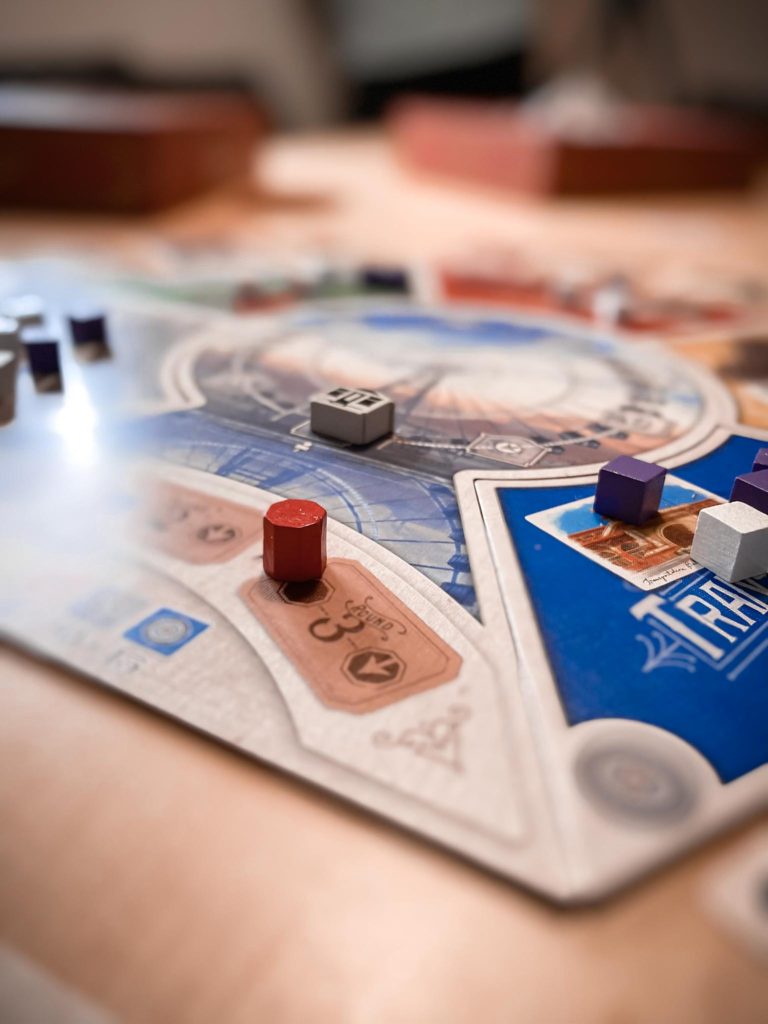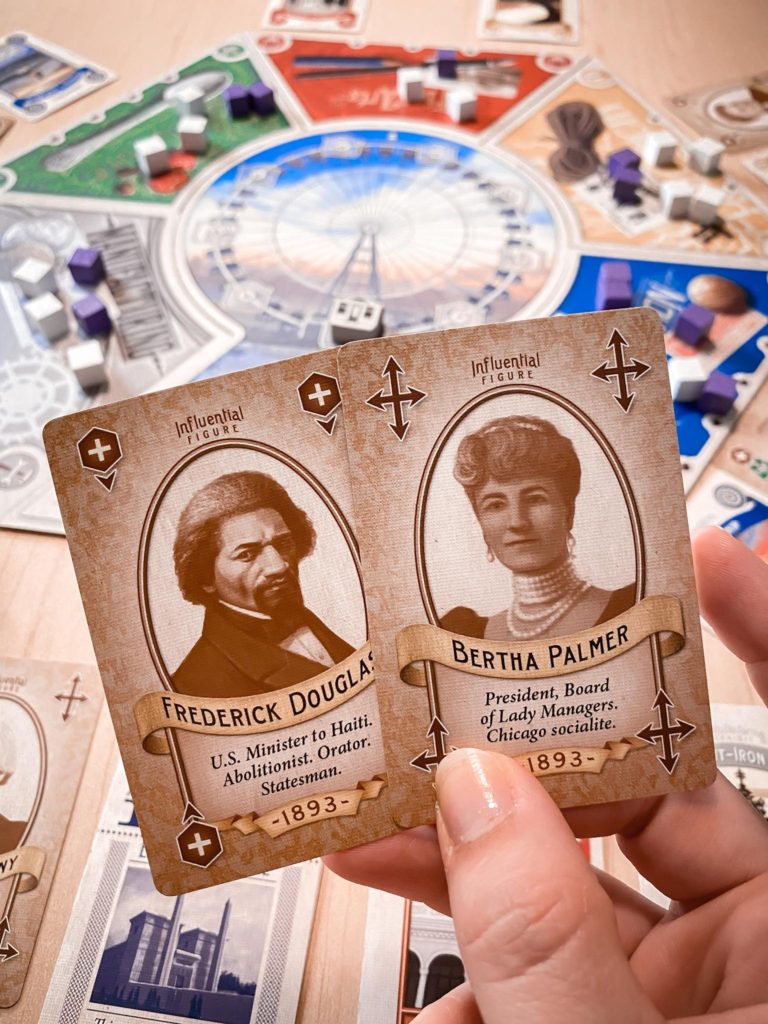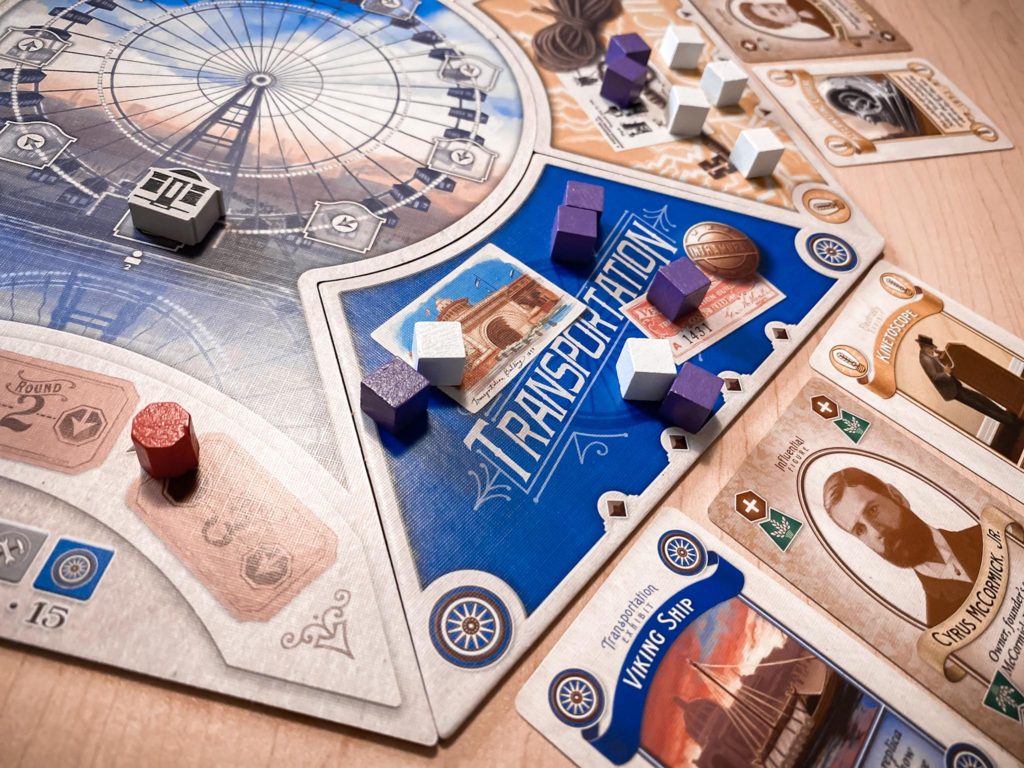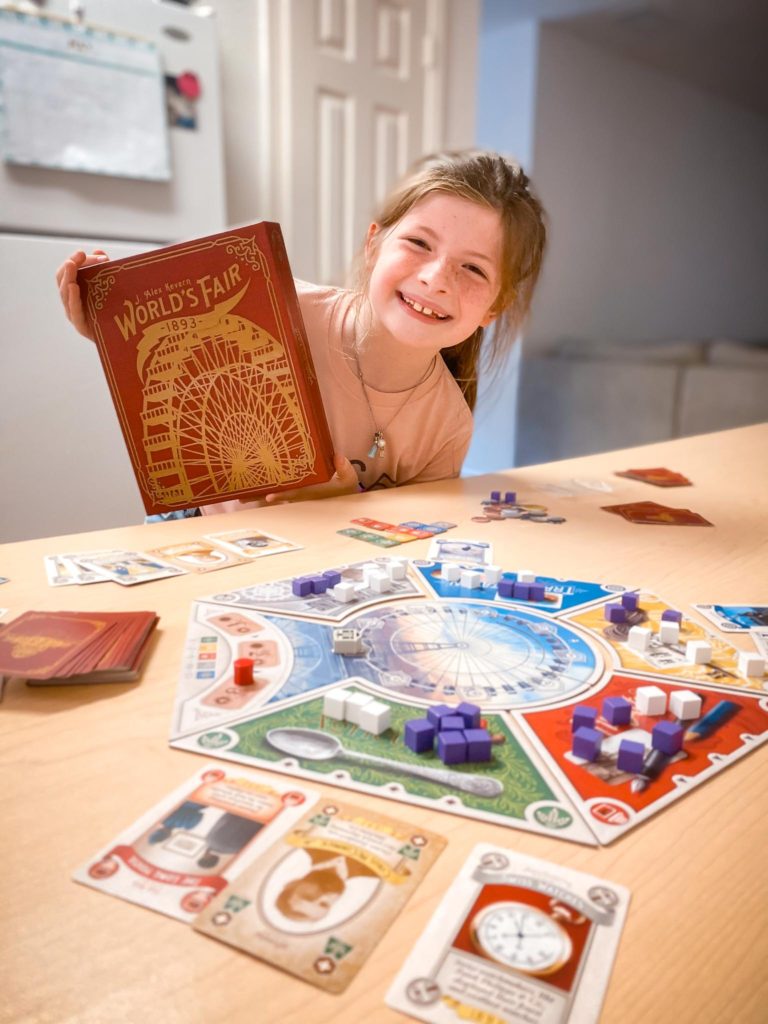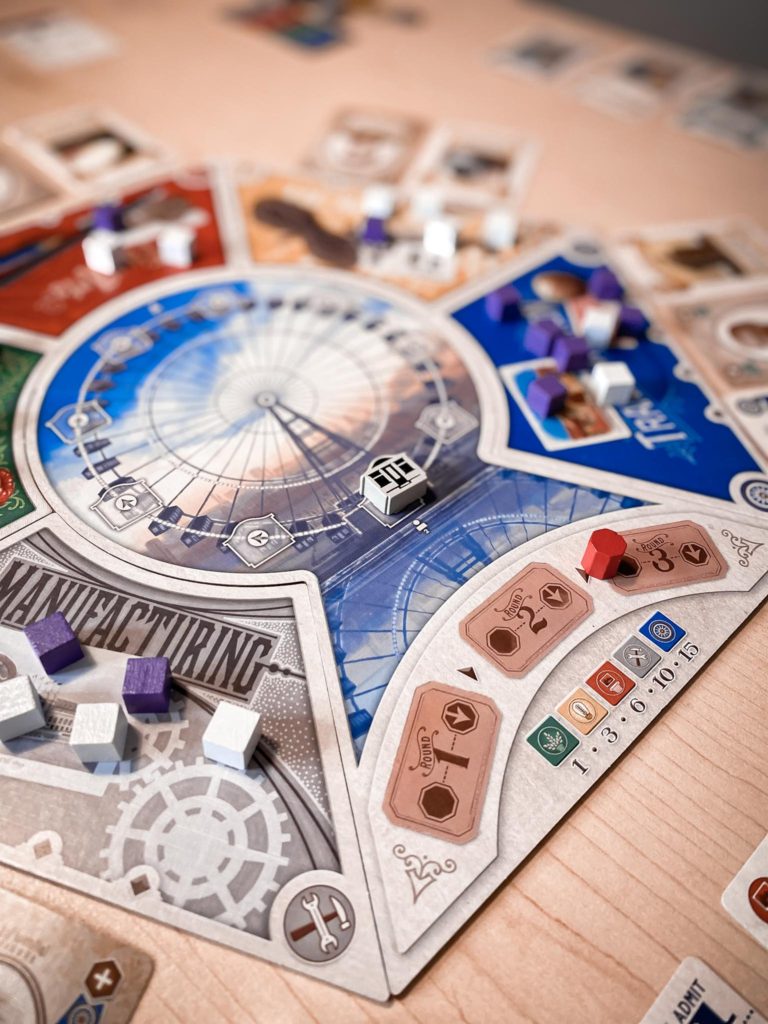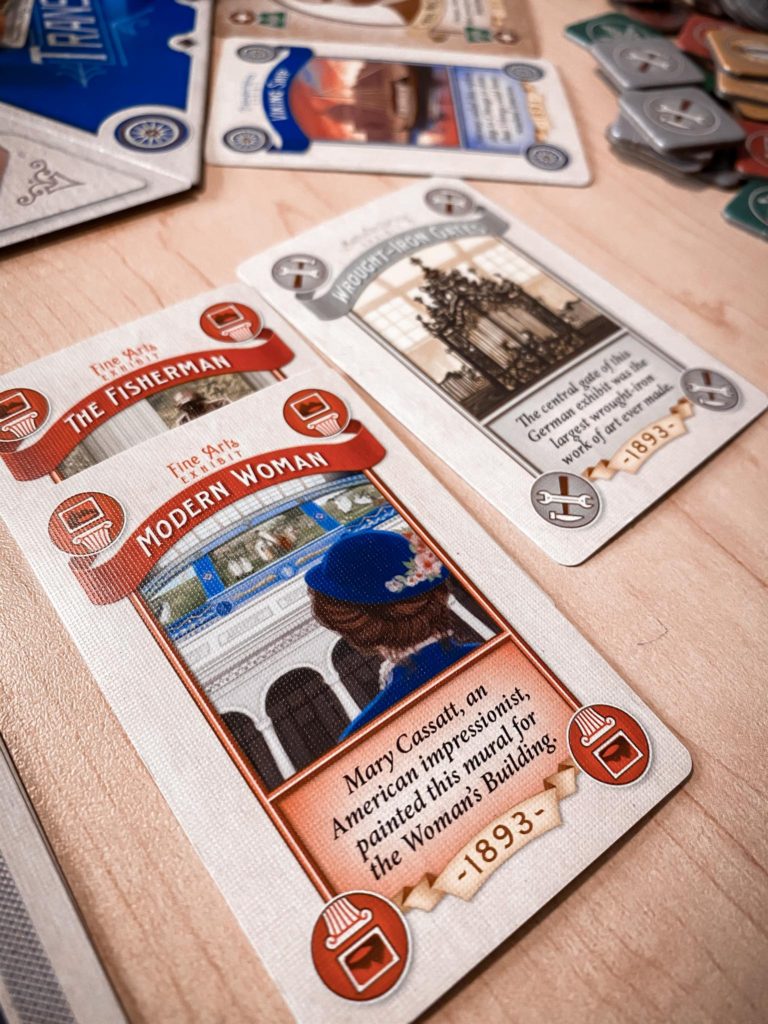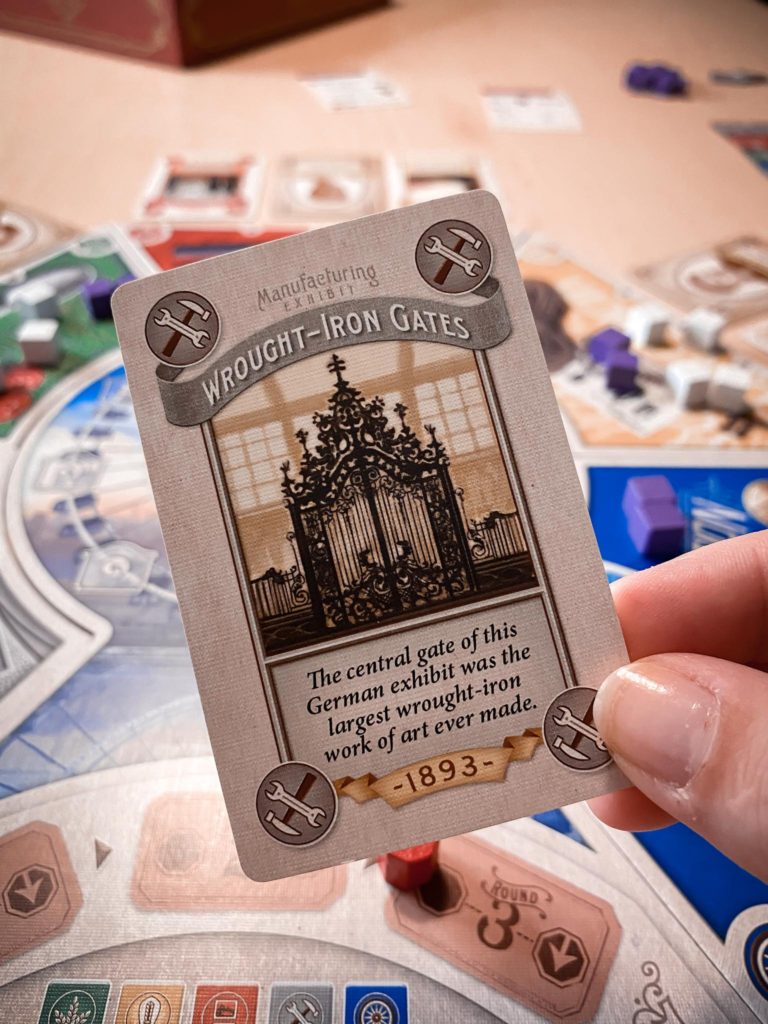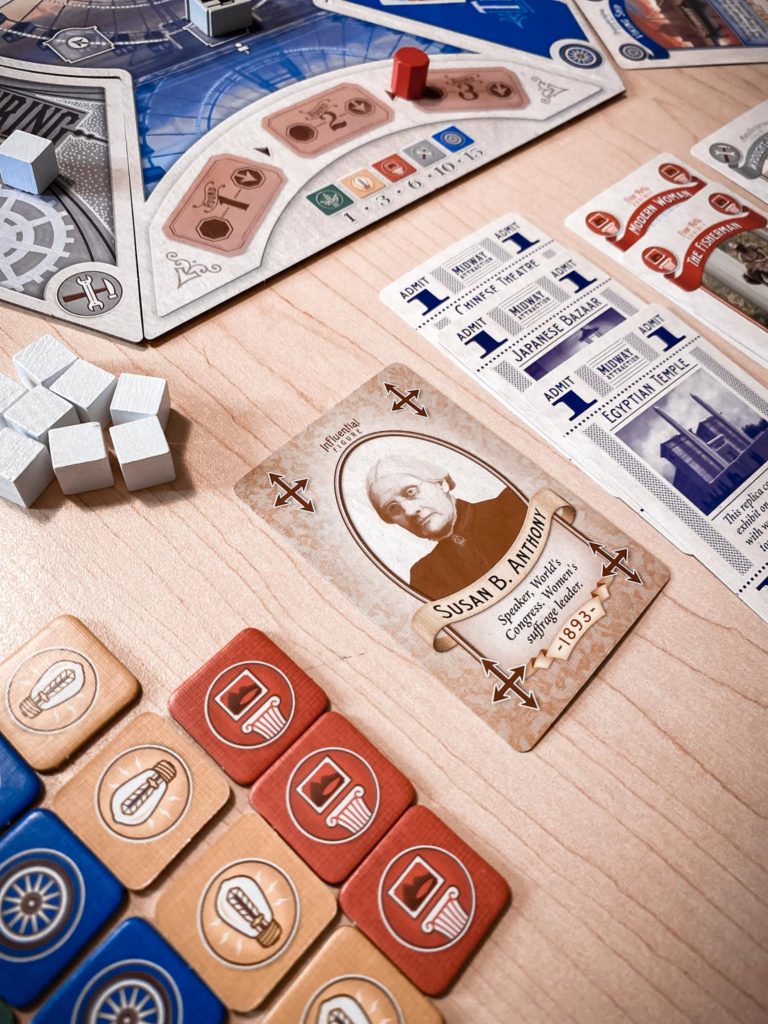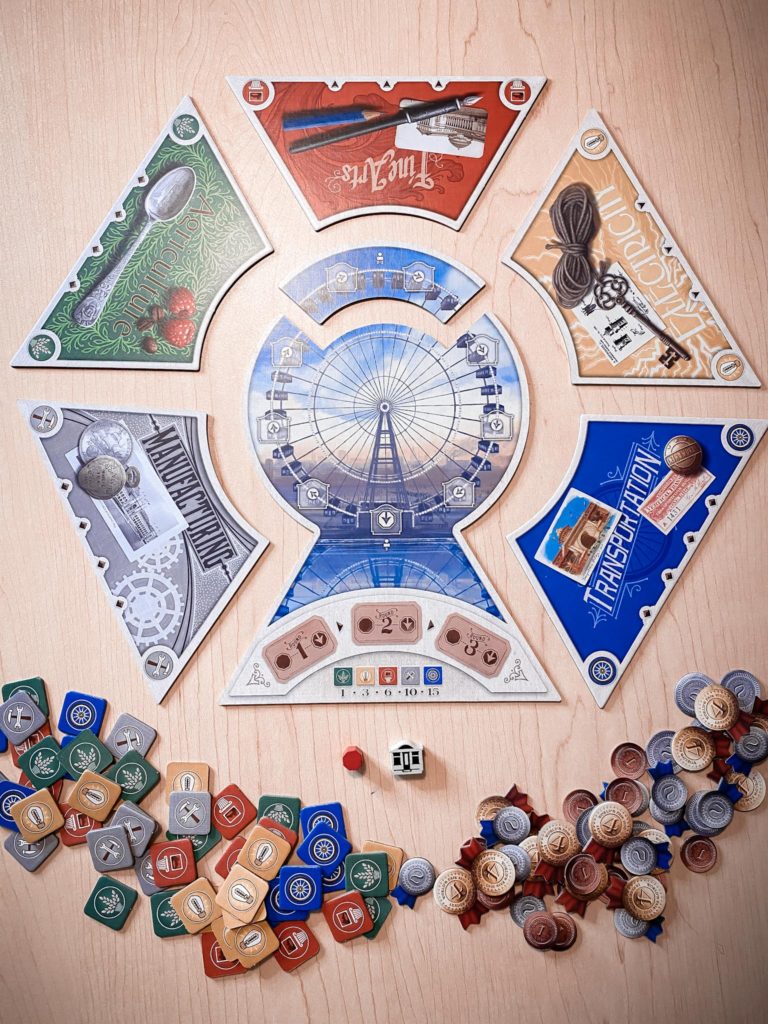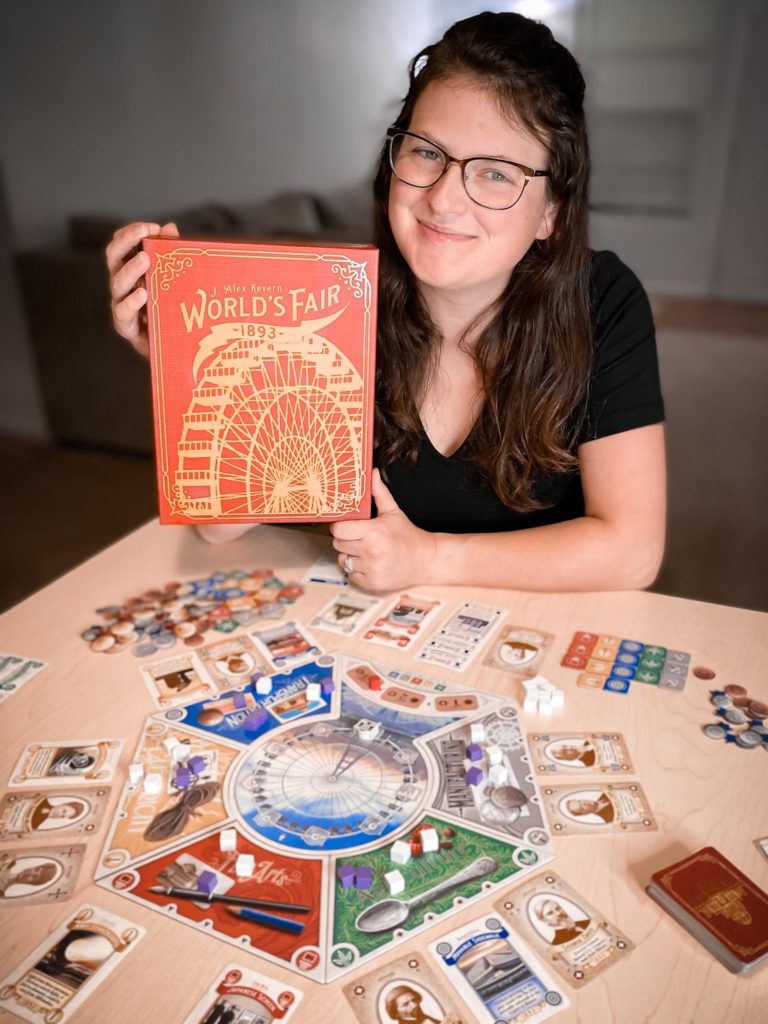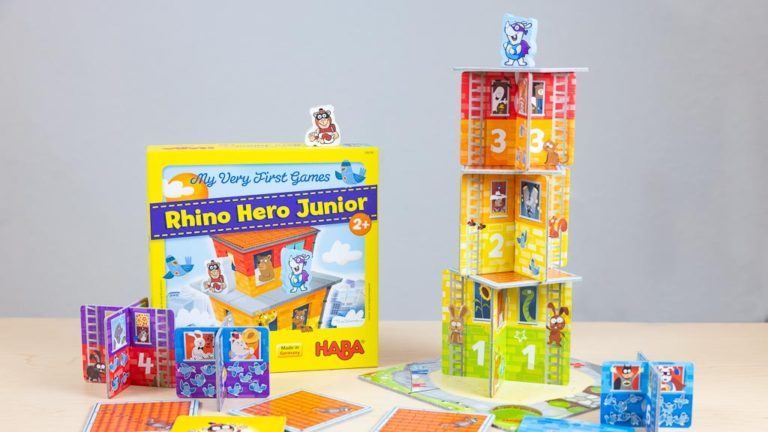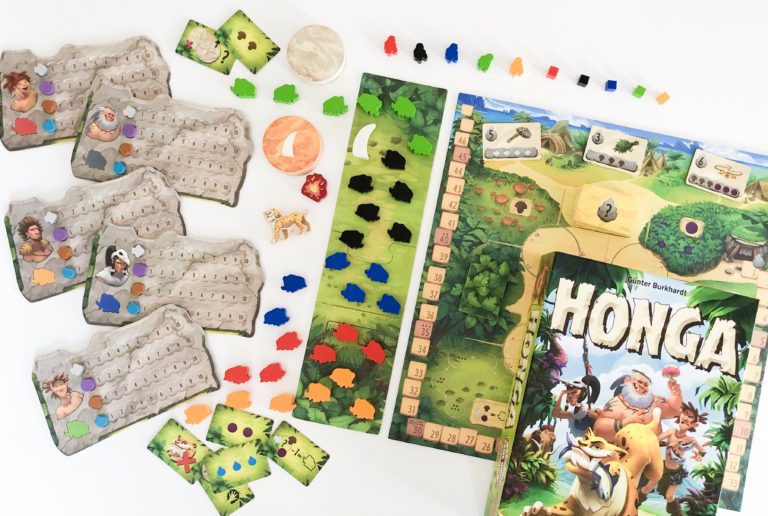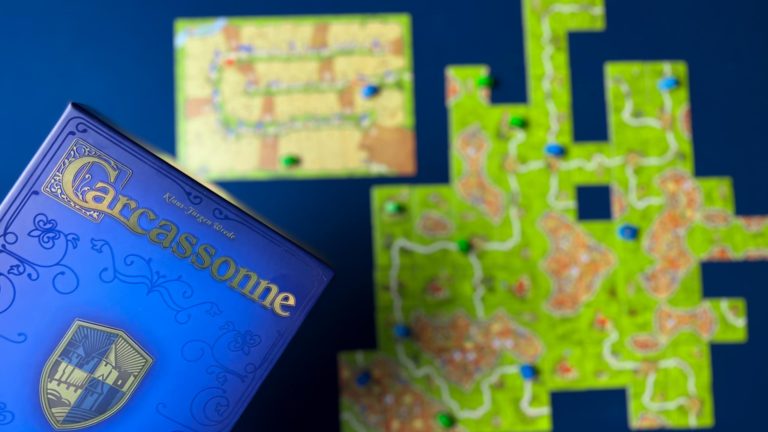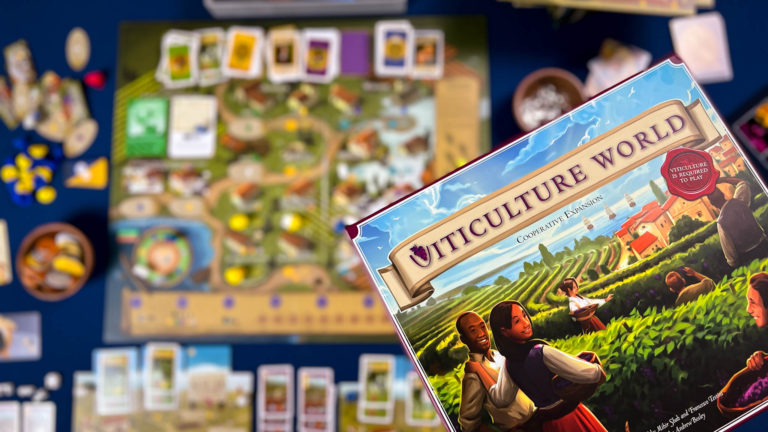We’re taking a look at World’s Fair 1893 both from both a game and an educational perspective. As an educator, I’m always on the hunt for quality games with beautiful designs where the theme can be incorporated into a lesson.
While this is often easier said than done, World’s Fair 1893 weaves a small history lesson within an excellent game for families. There’s lots to love here!
Overview of World’s Fair 1893 Gameplay
World’s Fair 1893 is played over here rounds. Each round ends in a scoring phase.
On your turn, you’ll place one of your cubes (supporters) in one of the five areas of the fair. (Manufacturing, electricity, agricultural, fine arts, transportation) If you have any influential figure cards collected from your previous turn, you play them all now — performing the action they grant you. You then collect all of the cards from the location you placed your cube. For any collected any tickets, move the elevator forward the number of spaces as tickets you collected. If the elevator reaches the bottom space on the Ferris wheel, the current round is over and the scoring phase begins. If not, then you add three new cards from the top of the deck, one each to a different section of the board, beginning with the location you placed your supporter and continuing clockwise.
At the end of each three rounds players receive points for the number of tickets they collected with the person who collected the most receiving a leader bonus of 2 points. Then each of the five areas are scored, leader medals are awarded to players with first and second majority, then those players are able to approve exhibits from that area, trading in a certain number of cards for an approval token.
At the end of the game, the players receive points for the sets of exhibits they were able to approve throughout the course of the game. Those points are combined with their three round scoring phase total and the player with the most points wins.
What do we think?
If you are looking for an excellent gateway Euro game, World’s Fair 1893 is it! This game is smooth as butter!
I absolutely love the clean design. It makes the game so easy to learn, play, and remember between plays! Players are simply placing a cube, collecting cards, and taking actions if applicable until the round is over. The scoring is also beautifully straightforward.
World’s Fair feels simple to play while the choices you have to make are interesting and thoughtful.
For families, World’s Fair 1893 is an excellent choice! It plays quite quickly and we always seem to want to play it at least twice. Turns are fast so players have little time to let their mind wander and disengage from the game. We’ve also found that it scales really well. Whether you’re playing with 2, 3, or 4 the game is just as much fun.
We really enjoy the challenges of trying to secure majority influence throughout the fair, knowing that you can’t have majority everywhere, while also trying to gather the cards you need. Often the areas you want to secure majority in and the cards you’d like to select are not in the same area, so you’ll have to choose which to pursue. These are simple choices in theory, but you really need to think through them. This gets especially interesting when you add in the fact that you can only approve exhibit cards from the areas that you win. So you really are challenged to make sure you’re not only getting the cards you need, but winning all the areas you’ll want to approve exhibits from.
There are so few rounds in the game (three) that each decision feels important right from the beginning. I love that sense of urgency that you feel! Because you gather all of the cards from the area you choose to send your representative (cube,) sections of the fair you either already had secured majority or were content to lose can suddenly seem very enticing when they have a full fleet of cards to collect. Sometimes choosing to gather cards that you can use effectively on your next turn(s) is the smartest route, even if it jeopardizes your chances of majority influence in another. But then, if there are too many tickets amongst the cards you may want to go somewhere else entirely. Since tickets advance the round you have to consider if you’re ready for the round to end or if you need to prolong it so you can gather more points.
These are the types of choices I love in a family game! They’re interesting without being overwhelming or demoralizing.
Just talking about this game makes me want to play it right now! It’s so good!
Great for Kids
Starting around the 8-10 age mark is the perfect time to introduce World’s Fair 1893!
The choices kids will have to make in the game as they seek to gain majority in the five areas while also securing exhibit sets provides a great challenge without being overwhelming.
Some games are just a touch too difficult and require a little coaching. With World’s Fair, our daughter (9) confidently picked up the mechanics while learning strategy from both her successes and mistakes. After her first game which resulted in a loss, she was able to see how she could improve on her next try all on her own.
World’s Fair gives that right amount of challenge for kids while still remaining friendly and not punishing so they are encouraged to continue playing.
Theme
More historical themes in games, please!
World’s Fair 1893 is a wonderful example of a historical theme perfectly applied.
Euro games seem to struggle with finding a theme that fits it rather than is slapped on. Using a historical event like the World’s Fair is a great way to not only pair mechanics with thematics, but also add a splash of education to the mix!
Components
The components in this game are top notch. The illustrations and color choices really lend itself to the historical period from which it is based while also giving the whole game a soft, pleasant appearance. It feels like a classic game from the past while playing like a clean modern game of the present.
Teaching History with Games
I’m always looking for ways to add more educational games to our homeschool and World’s Fair 1893 is an excellent choice!
I absolutely love that there is so much flavor text on the cards. This helps expand upon the theme and can spark interest into learning more about the World’s Fair, the influencers of the time, and the exciting exhibits that were presented. We inevitably spend time each play looking up all the people and exhibits on the cards. I’ve yet to not learn something when this game hits the table!
One of the reasons I really like this Amazon exclusive version of World’s Fair 1893 is because they’ve included a new group of diverse characters. (Ida B. Wells, Frederick Douglass, Irvine Garland Penn, Fannie Barrier Williams, Susan B. Anthony) From a historical perspective, I am glad that the context of the time is now more fully represented. This gives educators the opportunity to approach the topic of discrimination and racism in a way they feel is appropriate for their students’ ages. There is also a very helpful and well written historical note included in the rules booklet to help provide a jumping off point for discussion. The publisher also has additional information on the new characters, their influence, and historical impact on their website.
Ways to Use World’s Fair in Education
Here are some ideas on how you can incorporate World’s Fair 1893 as a jumping off point for a deeper dive into its significance in history:
- Research and write character studies on the figures included in the game. What were their achievements? How did the World’s Fair change their lives? How is their impact still felt in today’s world?
- Research the 5 different exhibit sections: Manufacturing, electricity, agricultural, fine arts, transportation
- In what ways did the 1893 Fair change America?
- Explore the electricity race to light the fair between rivals Tesla and Edison
- Choose an exhibit from at the World’s Fair — present it to the class as if you were the ambassador for that exhibit, tasked with showcasing the importance of this achievement to all who walked past.
- The Ferris Wheel was an influential attraction at the World’s Fair. Built to rival the Eiffel Tower, research its significance and how this invention has since become an icon at state and local fairs across the country.
- Create a timeline of an exhibit or attraction at the World’s Fair. Show how that exhibit has changed over time as technology and innovation has progressed
- Research the significance the 1893 fair was for Chicago at the time. How long did it take to prepare for the Word’s Fair? What did it mean for Chicago to host such an event after the Great Chicago Fire?
- Compare significant Fairs from across the years, include the upcoming World Expo set to be held in Dubai 2021. How have the themes of the fairs changed from the past to today?
- Write a reflection on what theme you think would be an important pavilion to include in a World’s Fair today. What types of exhibits would you see there?
There are also some great books on Word’s Fairs that would provide supplemental information for those interested in learning even more. These are great to check out from your local library
Historic Photos of the Chicago World’s Fair
They Changed the World: Bell, Edison, and Tesla
Exploring the Chicago World’s Fair
Night of the New Magicians (Paris World’s Fair 1889)
Summary
World’s Fair 1893 is an excellent family game. The gameplay is smooth and approachable with a fun theme that is ready to spark interest in history. Perfect for use in education, this is a must have for any family or educator looking for games to include in their educational library.
To bring home a copy of World’s Fair 1893 click here.
Find this and all our top game recommendations on our Amazon Storefront.
A special thank you to our friends at Renegade Game Studios for sending us this copy of World’s Fair 1893 for review. As always, our thoughts and opinions are our own.
Game Info:
Title: World’s Fair 1893
2-4 players Ages 10+
Designer: J. Alex Kevern
Artist: Beth Sobel
Publisher: Renegade Game Studios
If you enjoyed this post you may also like:
Mindblock
Storytelling with Fairy Tile
Board Games for Summer Break

